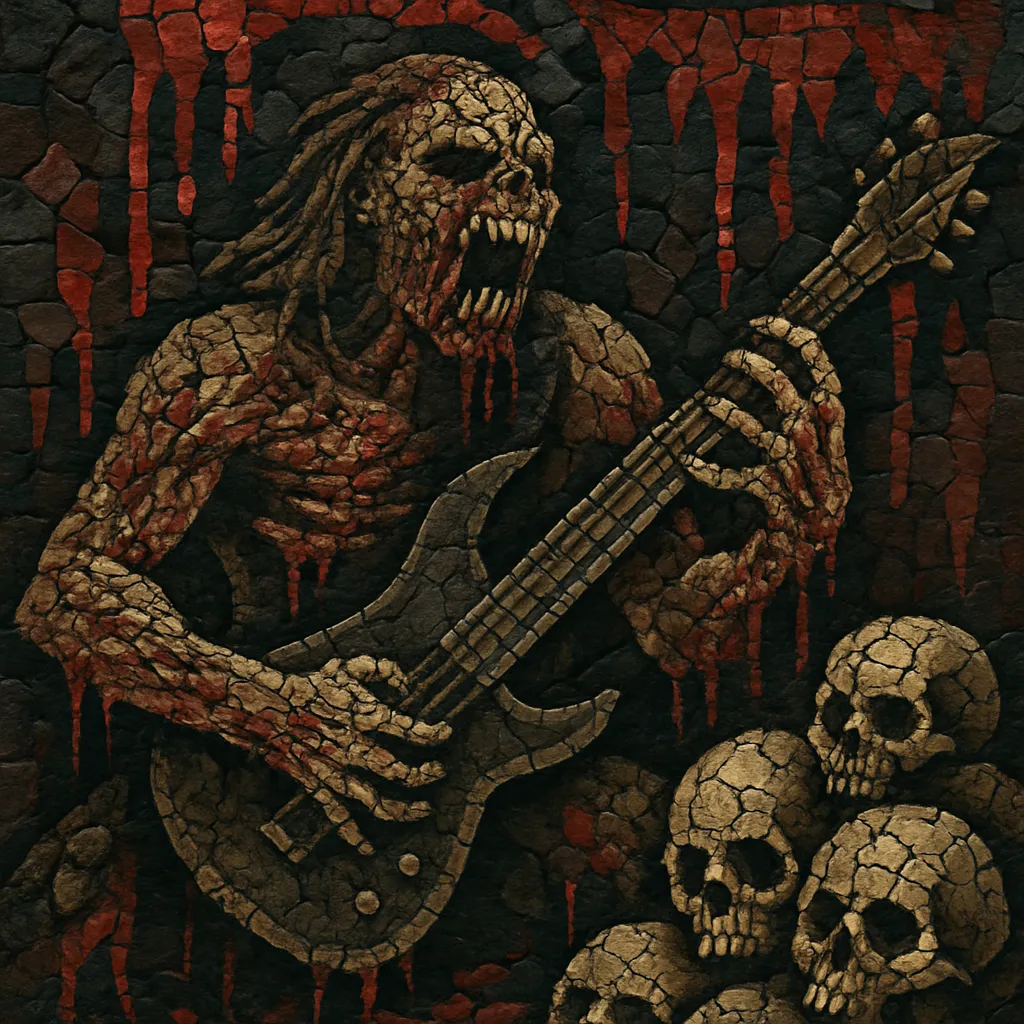Slam death metal is a hyper-groove-focused branch of brutal death metal characterized by extremely downtuned guitars, guttural vocals, and an emphasis on mid‑tempo, syncopated "slam" riffs that drop into crushing, half‑time breakdowns. Rather than the constant speed of many death metal styles, slam alternates bursts of blasts with deliberate, head‑nodding chug patterns.
The vocal delivery tends toward ultra‑low growls and gurgles, sometimes employing "pig squeal" techniques. Drums move between gravity blasts, traditional blasts, and stomping half‑time sections that accent the riff’s hook. Lyrics typically dwell on gore, horror, and extremity, with graphic imagery presented in a deliberately over-the-top, tongue‑in‑cheek or splatter‑cinema spirit.
Production often prioritizes a dense, percussive guitar tone, scooped or mid‑heavy rhythm definition, and cavernous vocals, keeping the slam riff as the song’s primary hook. The overall effect is simultaneously oppressive, rhythmic, and mosh‑oriented, designed to make the breakdown hit as hard as possible.
Slam death metal emerged from the U.S. brutal death metal movement. New York bands such as Suffocation pioneered the tar‑pit "slam" riff inside otherwise fast, technical songs, while Internal Bleeding pushed those breakdowns to the foreground on releases like Voracious Contempt (1995). These ideas married death metal extremity to the breakdown logic of hardcore, creating a distinct, groove‑centric brutality.
Devourment’s Molesting the Decapitated (1999) became the genre’s Rosetta Stone: ultra‑low tuning, caveman‑simple but irresistibly heavy slams, and subterranean vocals. Through the 2000s, a global network formed around specialty labels and distros (e.g., Sevared, Comatose, Unique Leader) and tape‑trading/early web forums. Japan’s Vomit Remnants, Russia’s Abominable Putridity and Katalepsy, Italy’s Vulvectomy, Norway’s Kraanium, and U.S. groups like Cephalotripsy, Pathology, and Guttural Secrete helped define regional strains while keeping the core slam ethos intact.
YouTube channels and social media hubs (notably "Slam Worldwide") supercharged discovery, enabling a steady flow of international releases and micro‑scenes. Production values diversified: some bands leaned cleaner and tighter, others embraced raw, swampy mixes that accentuate percussive chugs. Tech‑slam and brutal‑slam hybrids appeared, borrowing precision from technical death metal while preserving the breakdown‑first mentality.
Slam’s appeal lies in its unapologetic emphasis on riff impact over complexity. Critics sometimes deride it as "caveman" metal; devotees celebrate the physicality, crowd‑interaction, and immediacy of the slam. Today it stands as a stable extreme‑metal pillar with a thriving international circuit of festivals, boutique labels, and fiercely loyal fans.


